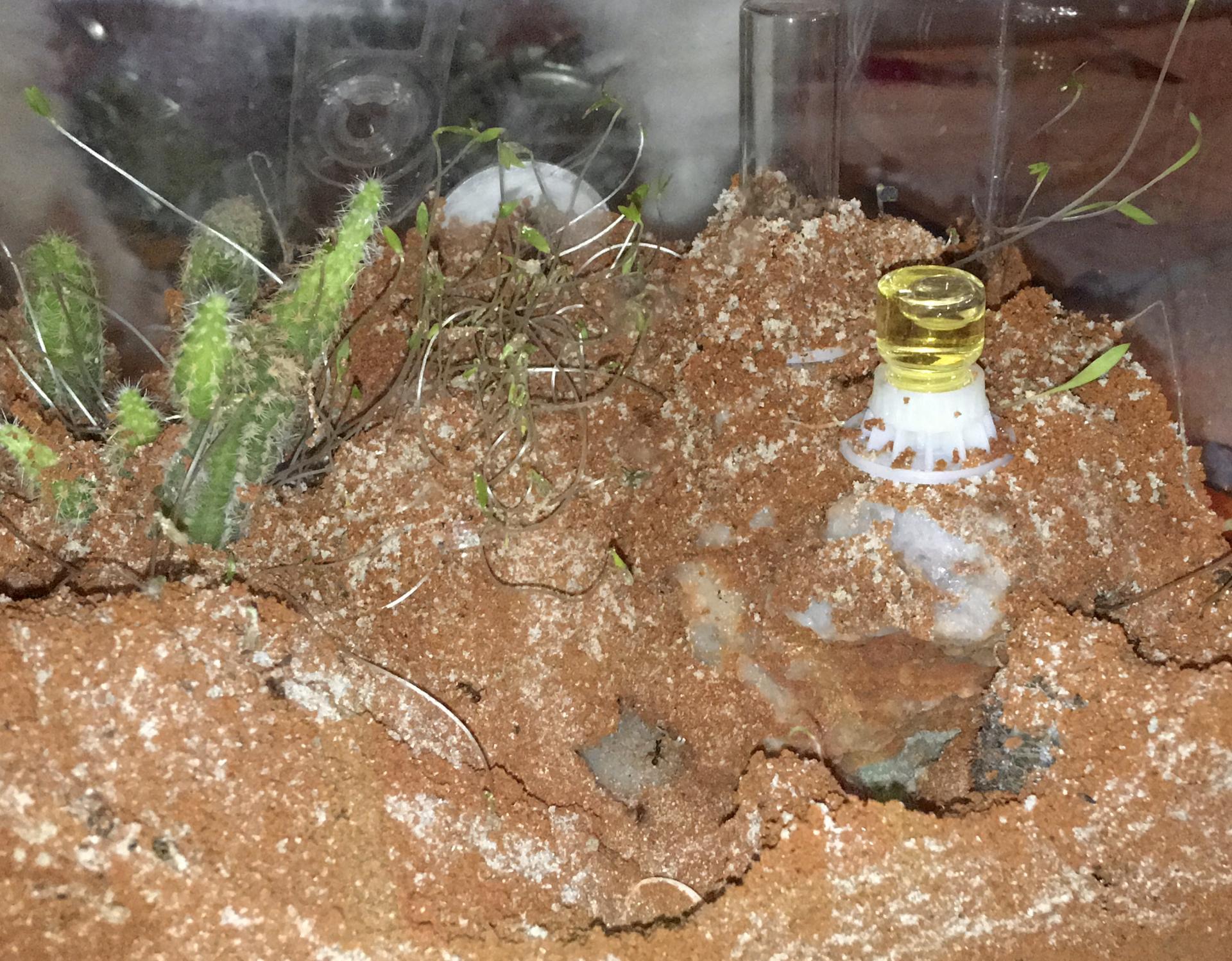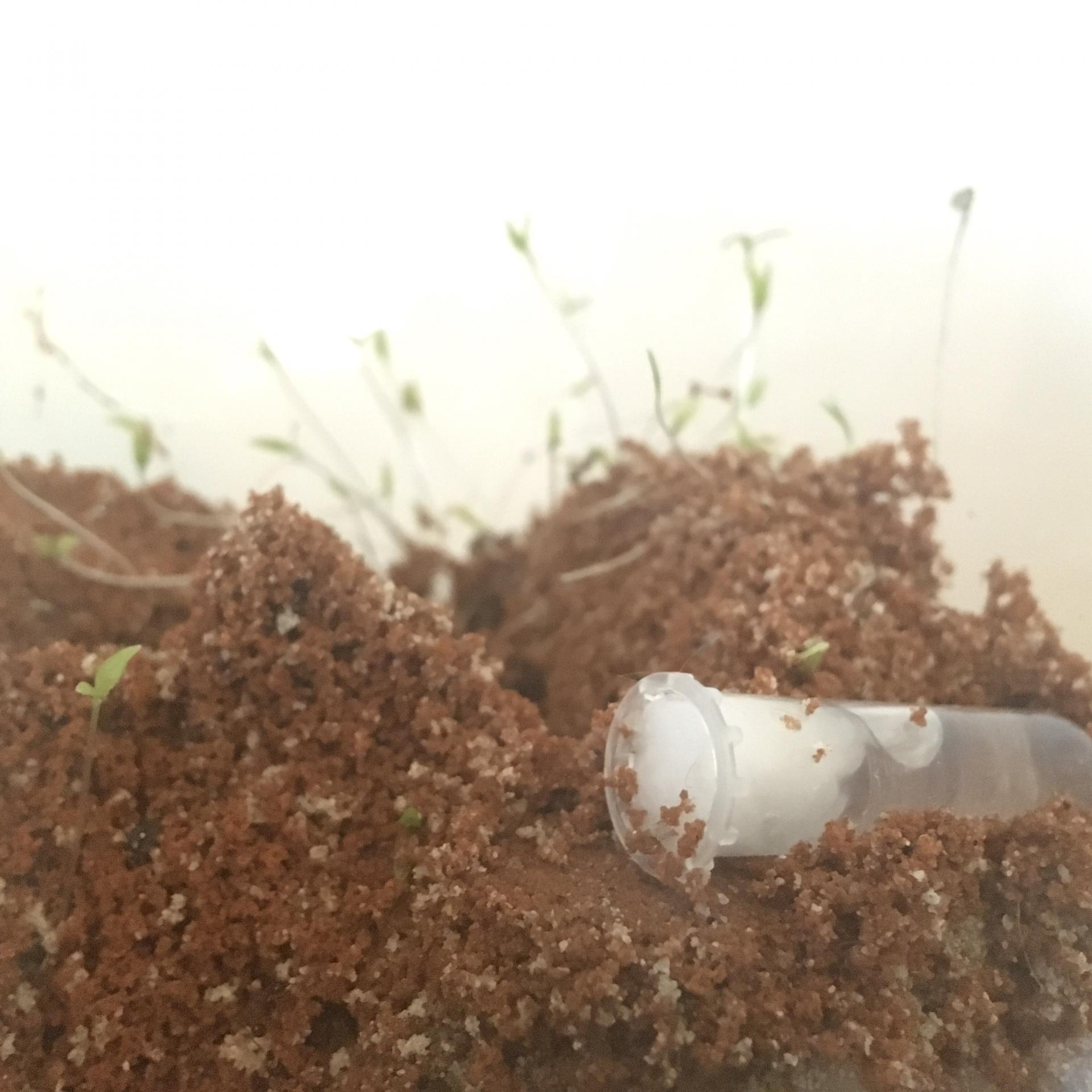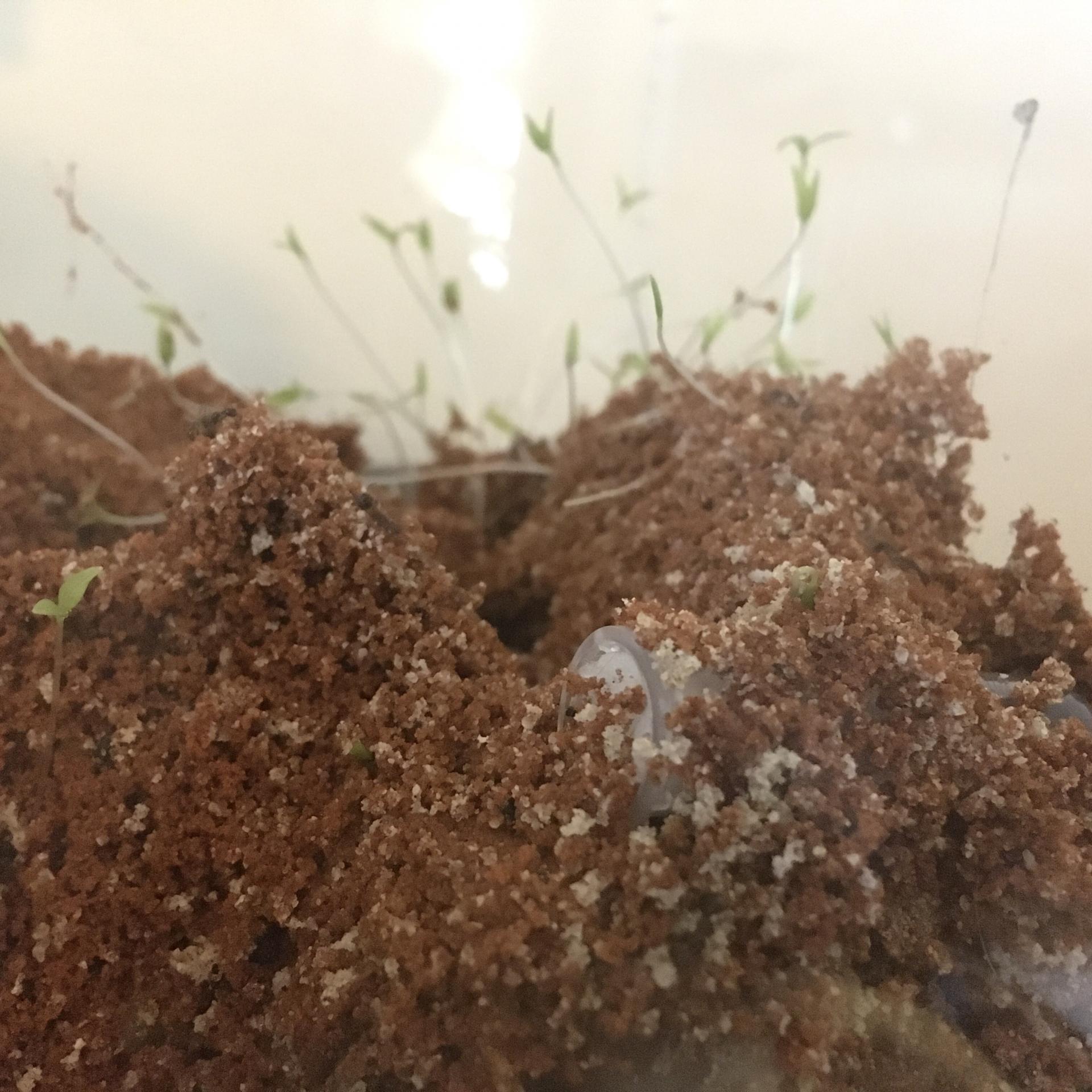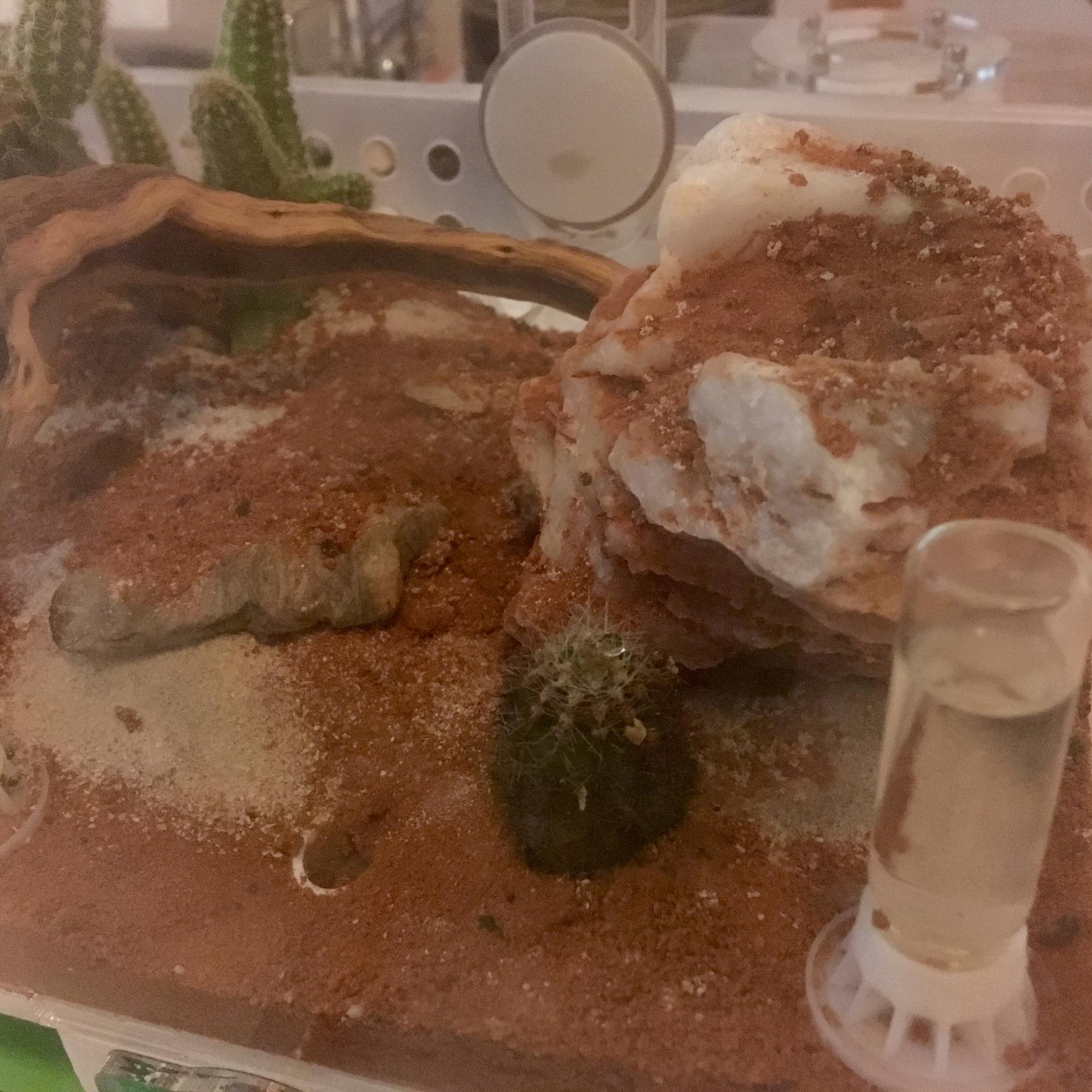- Formiculture.com
- Forums
- Gallery
- Members
- Member Map
- Chat
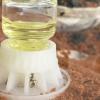
Natural formicarium tips?
Started By
justanotheramy
, Jan 18 2020 11:24 PM
21 replies to this topic
#1
 Offline
-
Posted January 18 2020 - 11:24 PM
Offline
-
Posted January 18 2020 - 11:24 PM
Short version: my aphaenogaster longiceps love to dig, because they’re aphaenogaster longiceps, and it looks like I can either work hard to make their lives very unsatisfying, or I can accept that I’ve been sold chaos ants and work to fulfil their needs.
Umm, background in the Australian section, but figured since I was mostly talking to Americans I might as well come her for my next question, hope that’s okay.
https://www.formicul...ceps-chaos-ants
My main concern with all their digging is that they’re diggging in pure sand, which is unstable and thus unsafe.
In the short term I’ve added a few seeds, hoping that roots will stabilise things a bit, but that is only short term, as the roots will rot/mould and then become a different problem.
What they really need is a formacarium designed for tunnelling — I assume I’m going to have to get them something bigger, to start with, and then… the substrate?
Something with clay?
A sand and clay mix?
Is there a ratio?
Is there something else?
What do people do when they want to keep their chaos ants both satisfied and relatively safe?
Umm, background in the Australian section, but figured since I was mostly talking to Americans I might as well come her for my next question, hope that’s okay.
https://www.formicul...ceps-chaos-ants
My main concern with all their digging is that they’re diggging in pure sand, which is unstable and thus unsafe.
In the short term I’ve added a few seeds, hoping that roots will stabilise things a bit, but that is only short term, as the roots will rot/mould and then become a different problem.
What they really need is a formacarium designed for tunnelling — I assume I’m going to have to get them something bigger, to start with, and then… the substrate?
Something with clay?
A sand and clay mix?
Is there a ratio?
Is there something else?
What do people do when they want to keep their chaos ants both satisfied and relatively safe?
#2
 Offline
-
Posted January 19 2020 - 3:21 AM
Offline
-
Posted January 19 2020 - 3:21 AM
Soil with a high clay content will be perfect for their tunneling. My advice would be to find wild nests of the species in your area and gather whatever type of soil they’re nesting in from around there. No need to sanitize the soil because I recommend going for a bioactive set up. Adding springtails or other decomposers would be helpful, too.
"The ants are a people not strong, yet they prepare their meat in the summer." Prov. 30:25
Keep ordinary ants in extraordinary ways.
Keep ordinary ants in extraordinary ways.
#3
 Offline
-
Posted January 19 2020 - 6:30 PM
Offline
-
Posted January 19 2020 - 6:30 PM
I saw that thread, I think ![]()
This was a purchased queen posted from interstate, so I'm not sure where I'd find the same kind of ant locally, or how I'd go about ensuring the soil hadn't been treated with insecticides if I did?
#4
 Offline
-
Posted January 19 2020 - 6:46 PM
Offline
-
Posted January 19 2020 - 6:46 PM
Ok. Get to a natural area where a lot of insects are living healthily. That will ensure you don’t have to worry about pesticides. Look for clay soil, basically any soil you can roll into a ball that will retain its shape will do. If you find any kind of soil nesting ants around, you can be pretty sure the soil will be suitable for your tunneling ants. Definitely don’t pay for some fancy soil mix or what not.
- BugFinder and justanotheramy like this
"The ants are a people not strong, yet they prepare their meat in the summer." Prov. 30:25
Keep ordinary ants in extraordinary ways.
Keep ordinary ants in extraordinary ways.
#5
 Offline
-
Posted January 19 2020 - 7:34 PM
Offline
-
Posted January 19 2020 - 7:34 PM
lol. I'm'a gunna get attacked by inch ants ![]()
But my reading says that aphaenogaster longiceps like their soil a bit on the sandy side?
And are small slaters/woodlice safe cohabitants for ants?
Edited by justanotheramy, January 19 2020 - 8:16 PM.
#6
 Offline
-
Posted January 20 2020 - 12:43 PM
Offline
-
Posted January 20 2020 - 12:43 PM
lol. I'm'a gunna get attacked by inch ants

But my reading says that aphaenogaster longiceps like their soil a bit on the sandy side?
And are small slaters/woodlice safe cohabitants for ants?
Woodlice should be safe. You can experiment with different sand/soil/clay mixtures. You want something that will be able to clump up, but not be too dense.
#7
 Offline
-
Posted January 20 2020 - 2:02 PM
Offline
-
Posted January 20 2020 - 2:02 PM
Young woodlice would be prey, especially newborns. I doubt they would be able to reproduce too successfully.
#8
 Offline
-
Posted January 20 2020 - 5:12 PM
Offline
-
Posted January 20 2020 - 5:12 PM
Yeah, only certain decomposers can coexist with a hungry colony without ending up on the lunch buffet.Young woodlice would be prey, especially newborns. I doubt they would be able to reproduce too successfully.
"The ants are a people not strong, yet they prepare their meat in the summer." Prov. 30:25
Keep ordinary ants in extraordinary ways.
Keep ordinary ants in extraordinary ways.
#9
 Offline
-
Posted January 20 2020 - 5:34 PM
Offline
-
Posted January 20 2020 - 5:34 PM
Aphaenogaster are almost exclusively carnivores in the wild too.
#10
 Offline
-
Posted January 20 2020 - 7:06 PM
Offline
-
Posted January 20 2020 - 7:06 PM
Yeah, I thought he meant safe for the ants. Safe for the wood lice, probably not.
- BugFinder likes this
#11
 Offline
-
Posted January 20 2020 - 10:19 PM
Offline
-
Posted January 20 2020 - 10:19 PM
My aphaenogaster so far refuse to eat anything other than medium sized flies (stunned), free-range mealworms from the garden (halved), and (occasionally) cricket drumsticks.
They twice ate small green caterpillars, but they are very particular about size and freshness and it being stunned but not dead :shrug:
I think live slaters would probably be fine, at least for a while.
Thinking about it, I reckon more rocks for them to tunnel between could be good as well, if those rocks were self-supporting — so that soil integrity is not doing all of the work?
The current setup has one rock, which now touches the bottom, and they seem to be concentrating their efforts around the rock and the formicarium corners, where they have some preexisting stability to lean on — matching what I've observed of wild ants preferring nest sites under concrete or stone, or between bricks etc.
Edited by justanotheramy, January 20 2020 - 10:39 PM.
- ITrapPlants likes this
#12
 Offline
-
Posted January 22 2020 - 12:59 PM
Offline
-
Posted January 22 2020 - 12:59 PM
Yes, rocks are an excellent idea. Many ants use rocks in their nest structure whenever possible.
- ITrapPlants and justanotheramy like this
"God made..... all the creatures that move along the ground according to their kinds (including ants). And God saw that it was good. Genesis 1:25 NIV version
Keeping:
Formica cf. pallidefulva, cf. incerta, cf. argentea
Formica cf. aserva, cf. subintegra
Myrmica sp.
Lasius neoniger, brevicornis
#13
 Offline
-
Posted January 27 2020 - 8:06 PM
Offline
-
Posted January 27 2020 - 8:06 PM
#14
 Offline
-
Posted January 27 2020 - 11:14 PM
Offline
-
Posted January 27 2020 - 11:14 PM
#15
 Offline
-
Posted February 4 2020 - 3:30 AM
Offline
-
Posted February 4 2020 - 3:30 AM
After the second time they buried their nectar feeder and made the sand sticky, I thought I'd try fruit for a while?
They don't like fruit — bury it without eating it. If it touches their feet they wash themselves fastidiously.
They've been 6 days without a nectar feeder, and look at them… I feel like a monster.
Poor starving ants.
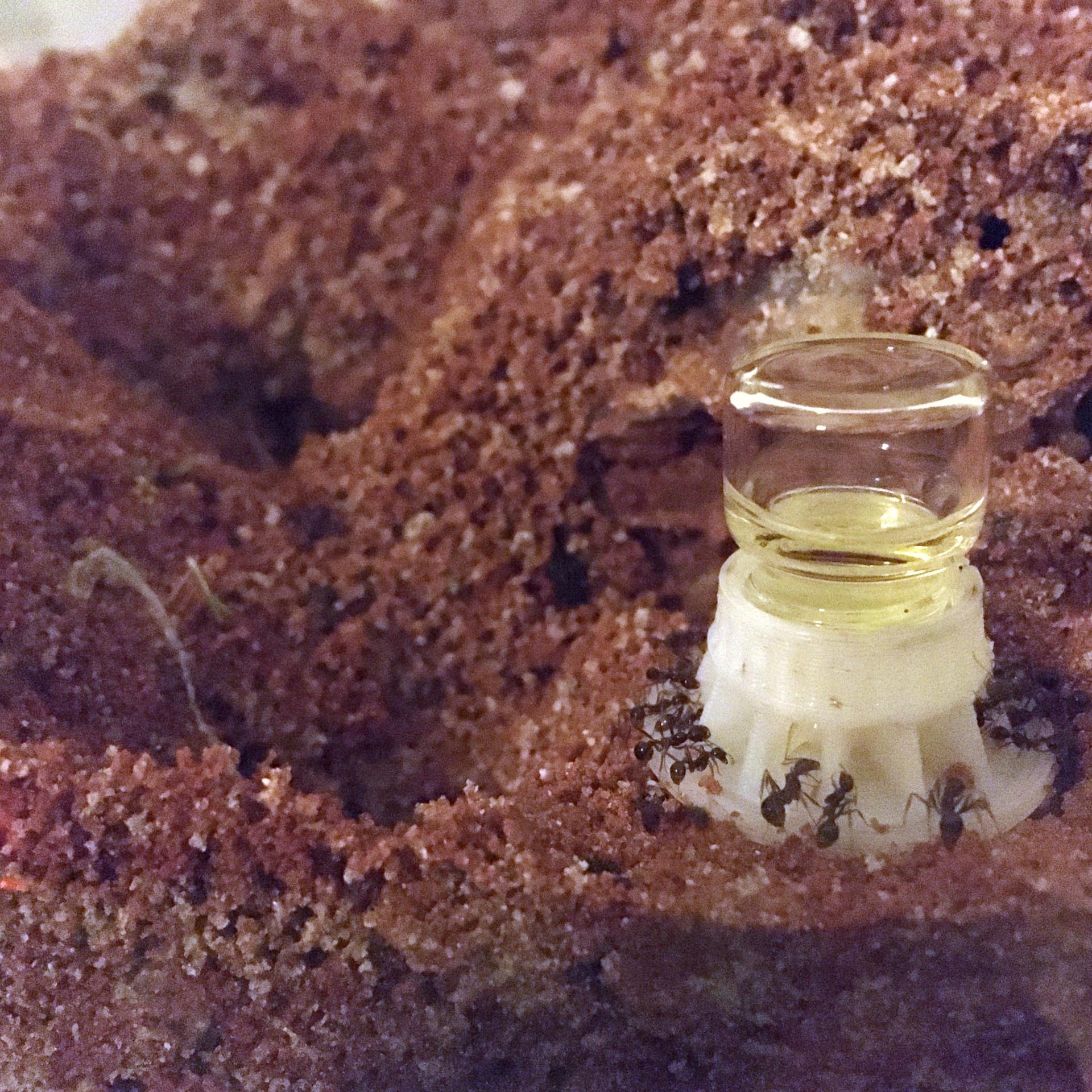
EDIT:
They've had it back all of 20 minutes, they're still queuing to drink, and their sisters are elbowing past them to shove sand into the feeder.
Never change, chaos ants. Never change ![]()
Edited by justanotheramy, February 4 2020 - 3:43 AM.
#16
 Offline
-
Posted February 9 2020 - 12:14 AM
Offline
-
Posted February 9 2020 - 12:14 AM
New large size Aus Ants Outworld arrived from Ant Keeping Depot, hurrah!
And after watching the Aus Ants video on natural formicariums I bought some charcoal from the aquarium shop — gravel layer, charcoal layer, separation layer, soil and rocks…
And then the chaos ants can have a lovely time mixing them all up.
That's the plan.
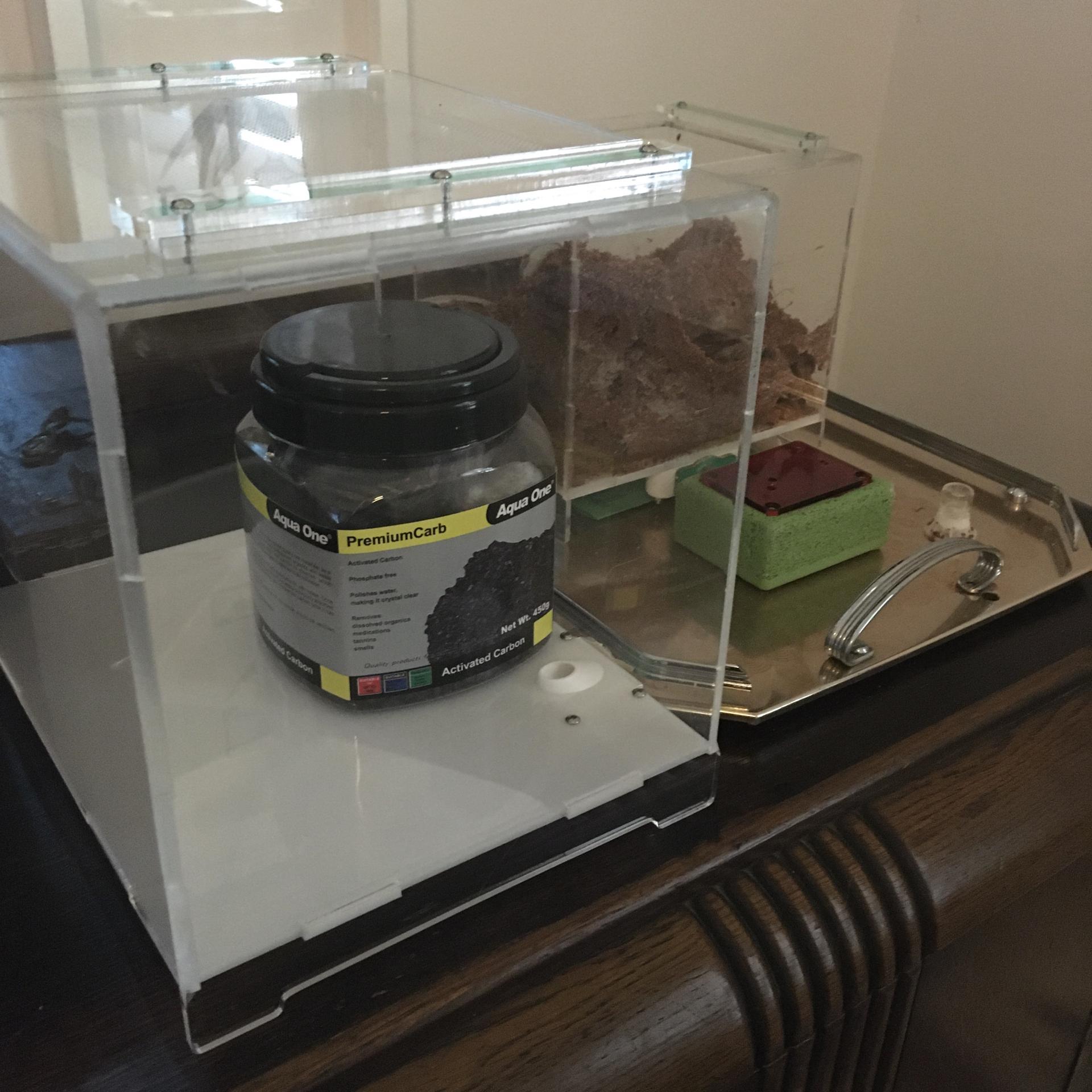
Waiting on a bucket of sandy clay from my brother, who lives in a semi-rural area with many many ants, so it must be good ant dirt.
I think I'll leave it connected to the current medium outworld, which means maybe putting a tube up from the port in the floor through the gravel and charcoal and soil?
Their digging is impressive — the piles have almost reached the roof and now contain chambers.
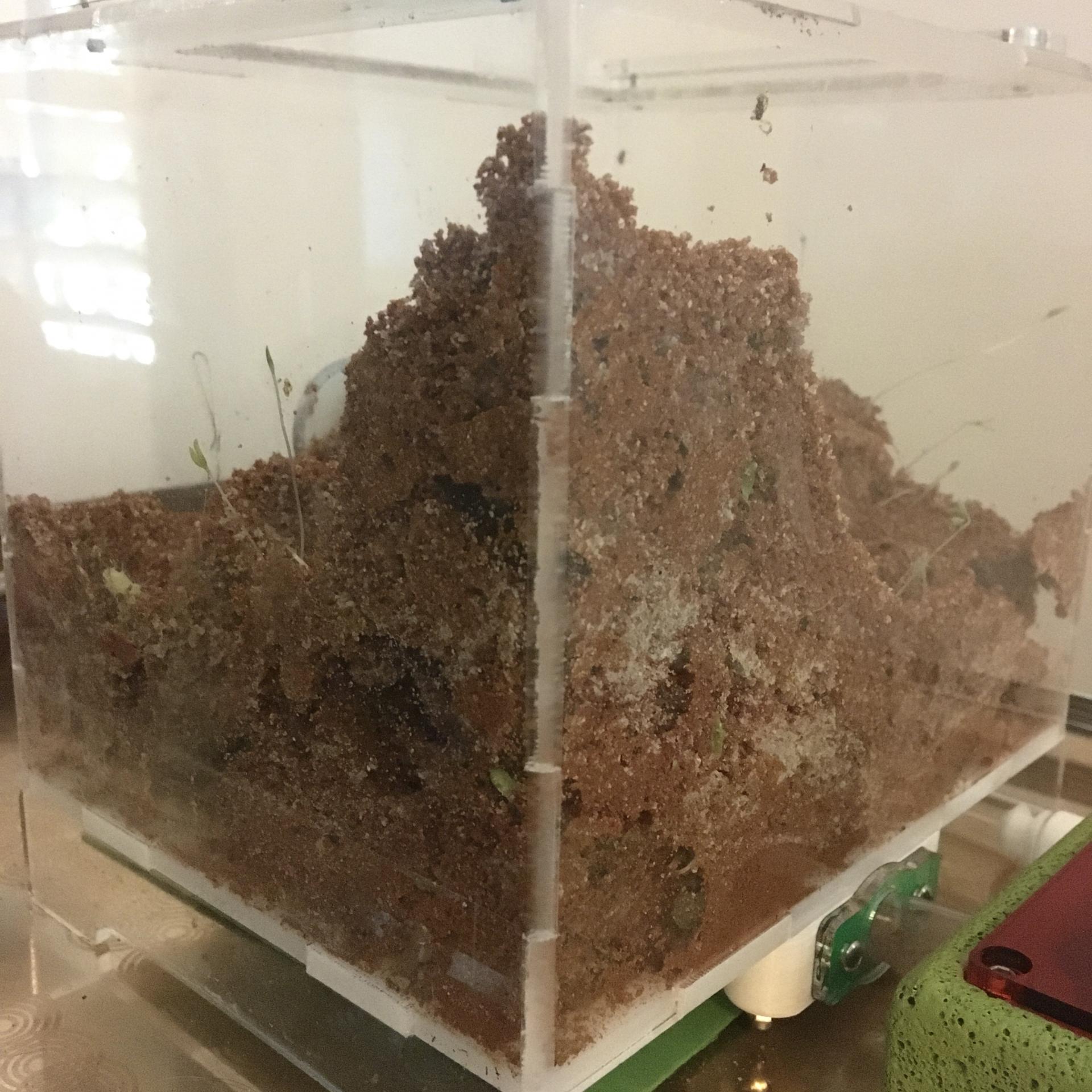
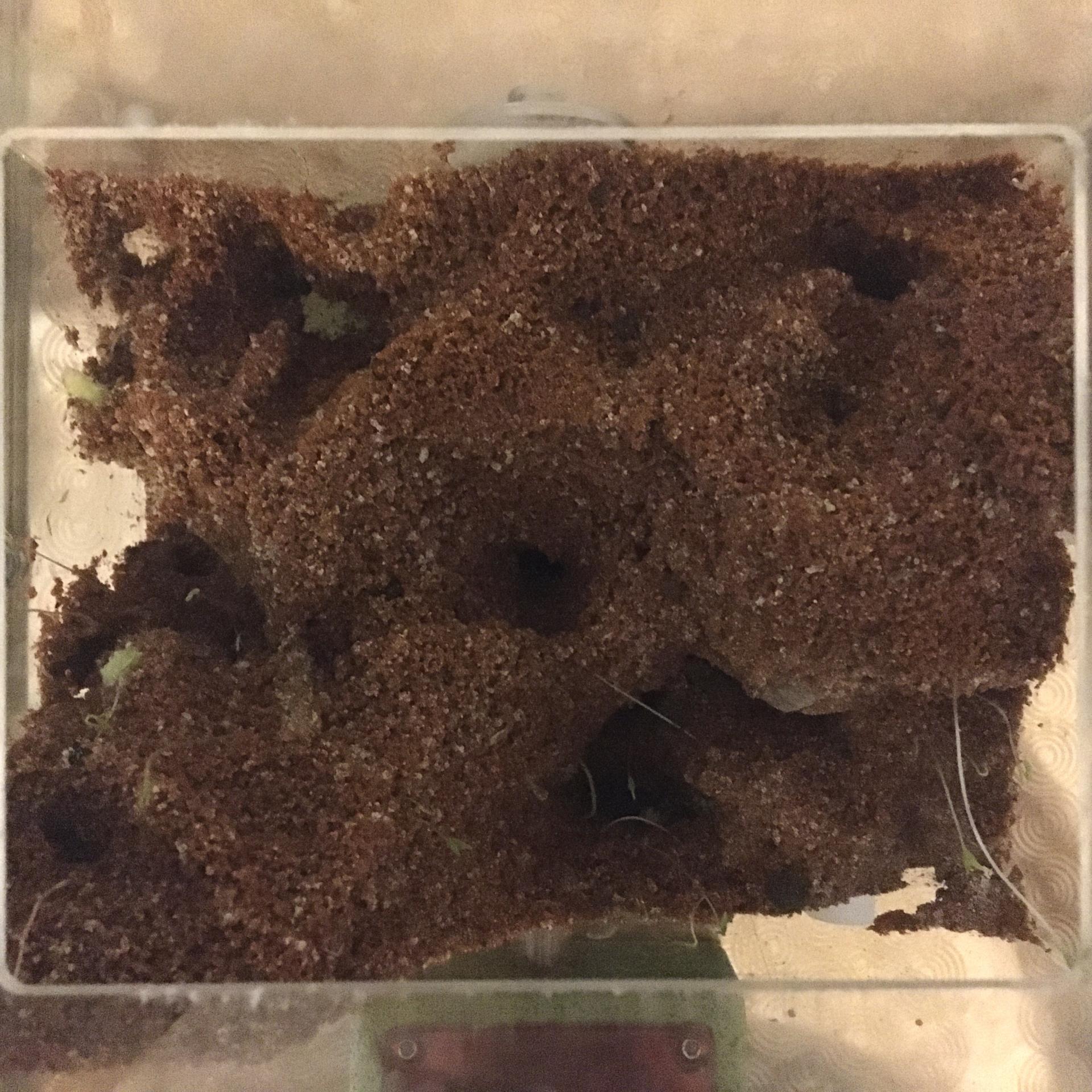
Still fussy eaters — they ate frozen prawn slivers once, but the second time I offered, they did… this:
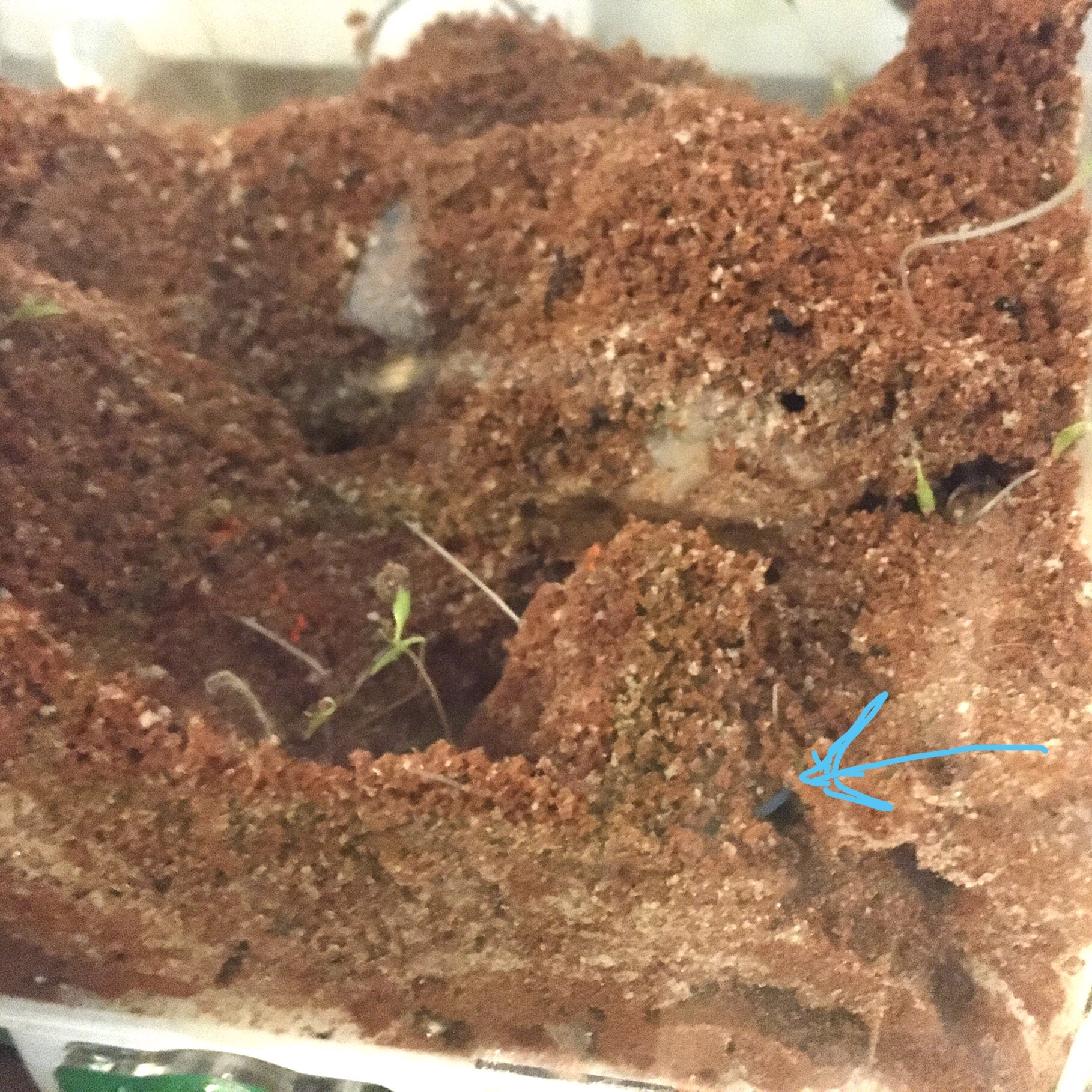
Blue arrow points to blue plate that had food on it 24 hours earlier.
- Ants4fun likes this
#17
 Offline
-
Posted February 9 2020 - 6:27 AM
Offline
-
Posted February 9 2020 - 6:27 AM
Wow! Be careful with the piling of soil. I had a huge jailbreak by my Tetramorium mega-colony when they piled up enough soil to pass their barrier.
- justanotheramy likes this
"The ants are a people not strong, yet they prepare their meat in the summer." Prov. 30:25
Keep ordinary ants in extraordinary ways.
Keep ordinary ants in extraordinary ways.
#18
 Offline
-
Posted February 9 2020 - 1:06 PM
Offline
-
Posted February 9 2020 - 1:06 PM
They seem pretty focussed on moving sand around for the sake of it — but I'm learning not to underestimate them, so I'll keep an eye on it, thanks ![]()
#19
 Offline
-
Posted February 9 2020 - 1:11 PM
Offline
-
Posted February 9 2020 - 1:11 PM
#20
 Offline
-
Posted February 9 2020 - 4:34 PM
Offline
-
Posted February 9 2020 - 4:34 PM
Yeah that reminds me of my Pogonomyrmex californicus in their tiny dirt box. Offer X: rejected. Offer Y: buried. Offer Y in a dish: buried. Offer Z: ignore. But several times they have gone after cooked shrimp or lamb. (I'm told, though, I should just stick with seed for the most part for Pogonomyrmex/Vero.)
Digging: In my case, they are good at digging in ways that leave a layer of soil against the walls so I can't see inside. Grrr. When I had the heat mat on, the larvae were kept at the bottom, but now that heat's off I don't know where the larvae are any more.
I did put springtails in. Started with a few springtails. Now there are actually a lot of springtails. I don't see Pogonomyrmex going after them but they are, after all, Pogonomyrmex. You might try springtails. I see them all over inside the actual nest. I'm hoping they keep mold at bay.
If you had an isopod culture I'd be really curious what the ants did with your excess pods.
P.S. I'm using one of dspdrew's DirtBoxes, and it does actually have instructions for removing dirt as the ants dig.
Edited by OhNoNotAgain, February 9 2020 - 4:38 PM.
- justanotheramy likes this
Formiculture Journals::
Veromessor pergandei, andrei; Novomessor cockerelli
Camponotus fragilis; also separate journal: Camponotus sansabeanus (inactive), vicinus, laevigatus/quercicola
Liometopum occidentale; Prenolepis imparis; Myrmecocystus mexicanus (inactive)
Pogonomyrmex subnitidus and californicus (inactive)
Tetramorium sp.
Termites: Zootermopsis angusticollis
Isopods: A. gestroi, granulatum, kluugi, maculatum, vulgare; C. murina; P. hoffmannseggi, P. haasi, P. ornatus; V. parvus
Spoods: Phidippus sp.
1 user(s) are reading this topic
0 members, 1 guests, 0 anonymous users



